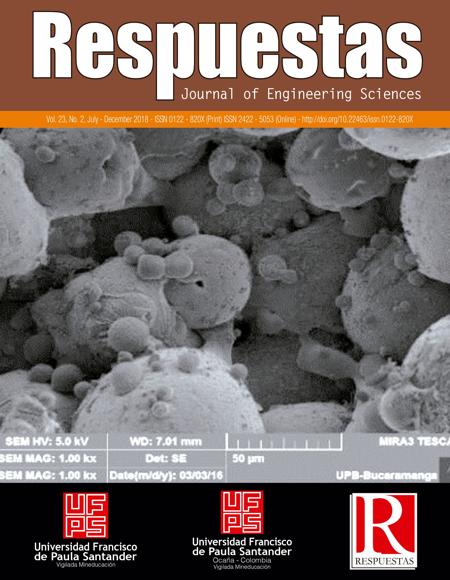Evaluation of the in vitro growth of the culture of oregano (origanum vulgare) from organogenesis’s technology
Evaluation of the in vitro growth of the culture of oregano (origanum vulgare) from organogenesis’s technology
Main Article Content
There was evaluated the in vitro growth of the culture of Origanum vulgare from Organogénesis’s technology. Three treatments of disinfection were applied for the explantes, with modifications in the time of dip, etc., evaluating the following variables: percentage of explantes prosperous, contaminated and oxidized. For the phase of establishment and multiplication, there were evaluated five and three means of culture Murashige and Skoog respectively, modifying the concentrations of the hormones. In agreement to the evaluation of the treatments of disinfection, one determined that the treatment one (T1), generated 100 % of explantes prosperous, opposite to the treatments other treatments. As for the means of culture Murashige and Skoog used in the phase of establishment the half number four (Ms4) possesses a significant difference in the percentage of germination, opposite to other means of culture evaluated. In the stage of multiplication the half number three (Mn3) with regard to the variable of height of the stem obtained a significant difference in relation with other evaluated means. Finally, in the phase of establishment the way Ms4 obtained the best performance in the germination of the seeds of oregano, in the stage of multiplication of the plántulas there was demonstrated a relation of 1:20, demonstrating a massive multiplication from a plant boss in the way of culture Murashige and Skoog Mn3, vitroplantas free of pathogenic.
Downloads
Article Details
E. García-Pérez, F.F. Castro-Álvarez, J.A. Gutiérrez-Uribe y S. García-Lara, “Revisión de la producción, composición fitoquímica y propiedades nutracéuticas del orégano mexicano”, Revista Mexicana de Ciencias Agrícolas, vol. 3, no. 2, pp. 339-353, 2012.
M. E. Torrenegra-Alarcón, “Evaluación de la actividad antioxidante del aceite esencial foliar extraido de especies de Orégano(Origanum vulgare), Orégano “Borde Blanco” (Origanum vulgare ssp) y Oreganito(Lippia alba mill)
cultivado en la zona norte del departamento de Bolívar (Col.)”, Cartagena de Indias, 2014.
M. A. Salamanca García y M. Sánchez Bermúdez,“Extracción y caracterización de la oleorresina del orégano( origanum vulgare)”, Pereira, 2009.4.
W. M. Roca y L. A. Mroginski, “Estabelcimiento de un laboratorio para el cultivo de tejidos vegtales”, de Cultivo de Tejidos en la Agricultura, Fundamentos y Aplicaciones, Cali, Centro Internacional de Agricultura Tropical CIAT),1991, pp. 1-19.
G. Braun y U. Zuccari, “Aportes biotecnoloógicos al cultivo de orégano”, 2014. [En línea].
“YODOPOVIDONA 10% Solución Antiséptico desinfectante”. Bolivia.
Á. Azofeifa Delgado, “Problemas de oxidación y oscurecimiento de explantes cultivados in vitro”, Agronomía Mesoamericana, vol. 20, no. 1, 2009.
J. A. Pedroza Manrique, “Efecto del carbón activado, ácido indolacético (AIA) y bencil amino purina (BAP) en el desarrollo de protocormos de Epidendrum elongatum Jacq bajo condiciones in vitro” Revista Colombiana de Biotecnología, vol. 11, no. 1, pp. 17-32, 2009.
M. A. rojas Pérez, G. Montes Rivera, R. Silva Vásquez y B. Díaz Ramírez, “Respuesta al balance hormonal en segmentos nodales de orégano (Lippia berlandieri Schauer)”, RESPYN , vol. Edición Especial, no. 1-2008, 2007.
A. Cano Ortíz y C. Martínez Lombardo, “Cultivo de plantas medicinales en la provincia de Jaén”, Boletín del instituto de estudios Giennenses, no. 200, pp. 195-230, 2009.







